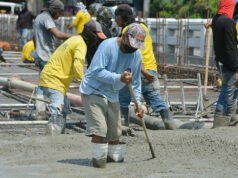T-bill rates likely to drop
TREASURY BILLS (T-bill) on offer on Monday will likely fetch lower rates amid strong liquidity from the reduction of banks’ reserve requirement which will take effect this week and ahead of the October inflation data.
The Bureau of the Treasury (BTr) is looking to raise P20 billion via T-bills today, broken down into P8 billion from the 91-day papers and P6 billion each from the 182- and 364-day securities.
During the previous auction held on Oct. 21, the government raised just P12 billion via the T-bills out of its P20-billion program, even as the offer was almost three times oversubscribed, with tenders reaching P59.8 billion.
The Treasury did not award any three-month papers as its rate climbed. Total bids amounted to P21.65 billion versus the government’s P8-billion offer.
Had the government made a full award of the 91-day T-bills, its average rate would have climbed to 3.122%, 12.7 basis points (bp) higher than the 2.995% fetched during the Oct. 8 auction.
Meanwhile, the government awarded P6 billion as planned in the 182-day T-bills out of bids worth P16.41 billion. The tenor’s average rate inched up by 0.3 bp to 3.174% from the 3.171% recorded previously.
For the 364-day papers, the Treasury likewise borrowed P6 billion as programmed as the tenor attracted demand worth P21.72 billion. The yield on the one-year papers went down by 0.1 bp to 3.576% from the 3.577 seen during the last auction.
Yields on the three-month, six-month and one-year papers ended at 3.172%, 3.308%, and 3.615% last week, based on the PHP Bloomberg Valuation Service Reference Rates as of Oct. 31 published on the Philippine Dealing System’s Web site.
Kevin S. Palma, Robinsons Bank Corp. peso debt trader, sees the rates of six-month and one-year papers declining by five to 10 bps today, while the three-month papers may fetch a slightly higher average rate or end flat.
“Another strong turnout is expected with the effect of the RRR (reserve requirement ratio) cut now underway and as investors continue to show appetite for short-term assets amid favorable domestic economic backdrop, with both inflation print for October and GDP (gross domestic product) growth data are to be released this week,” Mr. Palma said in a text message.
“Demand will be further reinforced by reinvestment requirements given some P25-billion worth of maturing T-bills in the next two weeks,” Mr. Palma added.
Meanwhile, Rizal Commercial Banking Corp. (RCBC) chief economist Michael L. Ricafort said in a text message that yields may end steady or slightly lower at today’s auction “amid effectivity of RRR cuts in terms of additional peso funds/liquidity into the financial system, market expectations of further slight easing of inflation for the month of October 2019.”
The Philippine Statistics Authority is scheduled to release the October inflation report on Nov. 5 and the third quarter GDP figures on Nov. 7.
Meanwhile, the reserve ratios of universal and commercial banks now stands at 15% following the effectivity of the 100-bp cut in RRR announced in September. Likewise, the RRR of thrift banks is now at five percent, while that for rural banks stands at three percent.
The Bangko Sentral ng Pilipinas announced last month that the reserve ratio of universal, commercial and thrift banks will be slashed by another 100 bps effective December, bringing total reductions to their reserve ratios for this year to 400 bps. This cut will also apply to the reserve ratio of non-bank financial institutions with quasi-banking functions (NBQBs).
This will bring the reserve ratio of universal and commercial lenders to 14% by December, while the RRR of thrift banks will stand at four percent.
On the other hand, the reserve ratio of NBQBs will be cut to 14% next month.
The government is set to borrow P220 billion from the local market this quarter, broken down into P100 billion in T-bills and P120 billion via Treasury bonds.
It is looking to raise P1.189 trillion this year from local and foreign sources to fund its budget deficit, which is expected to widen to as much as 3.2% of the country’s gross domestic product. — B.M. Laforga



